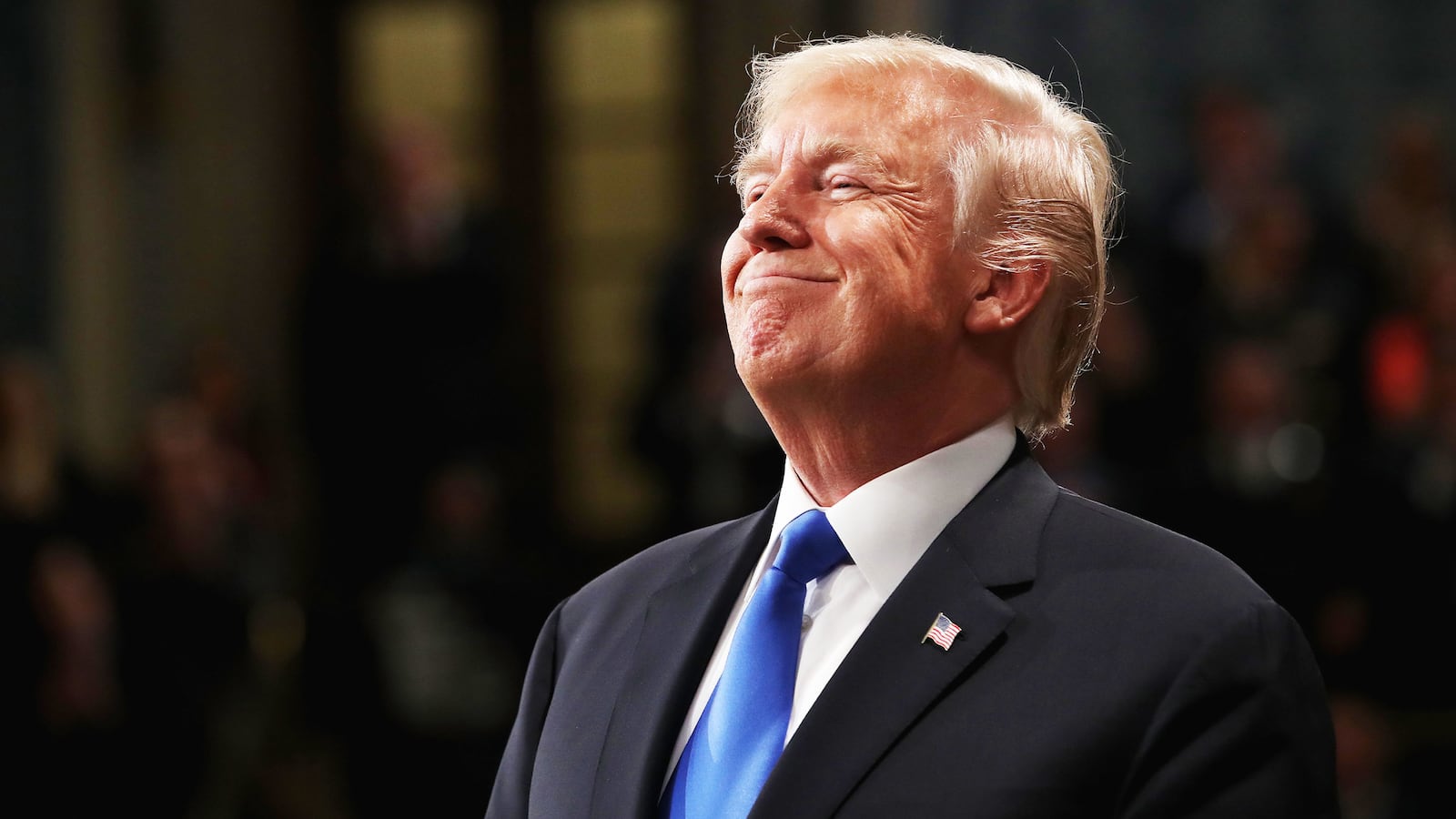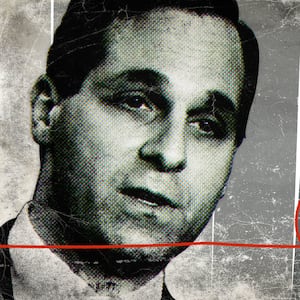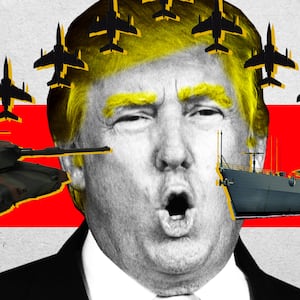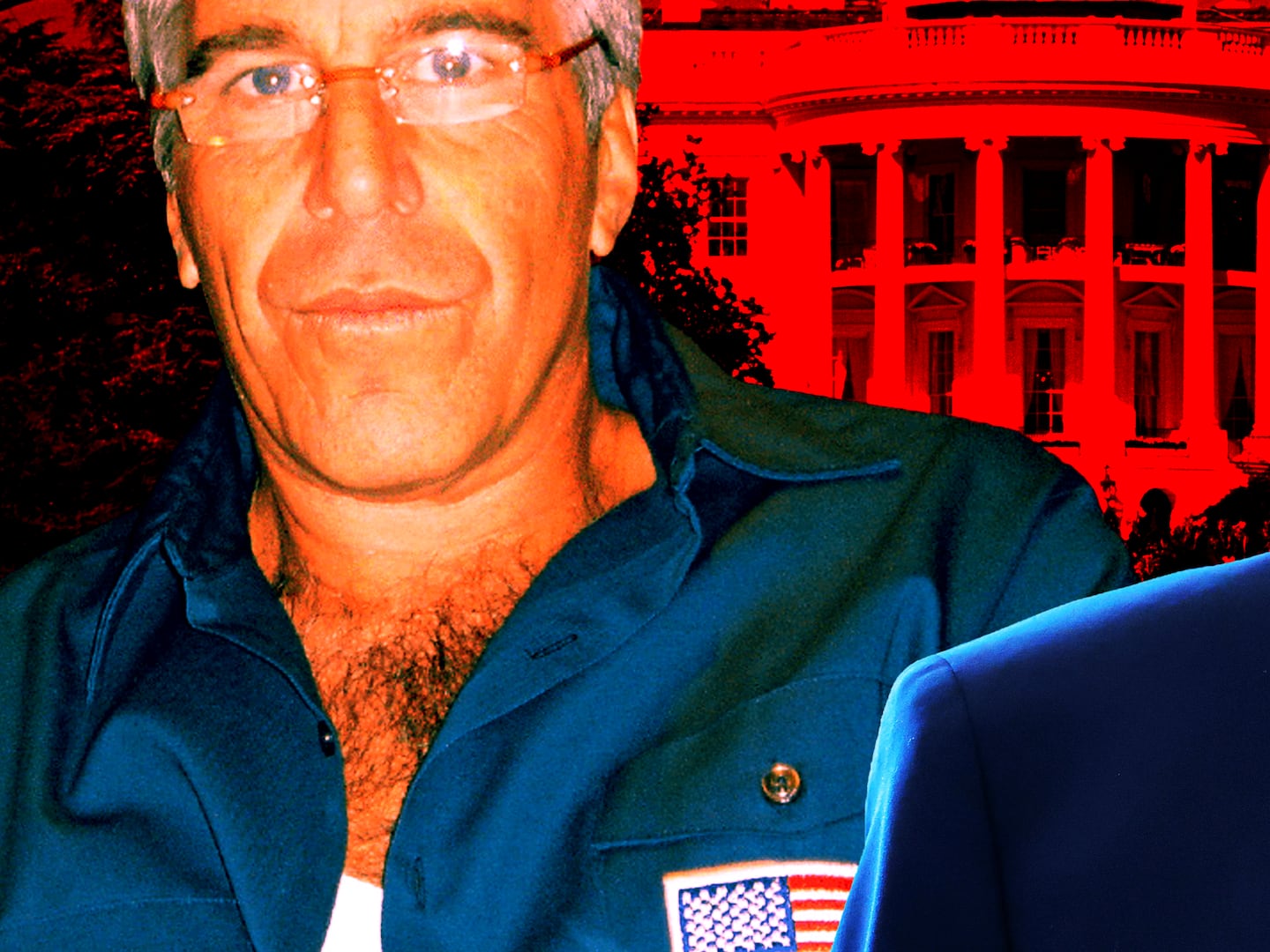This is the second article in a three-part series about the way top officials in the fight against terrorism during the 1990s worked closely together to try to keep Americans safe, but were turned against each other in the Age of Trump, and why.
On July 17, 1996, TWA Flight 800, a Boeing 747 carrying 230 summer vacationers, would-be tourists, and crew members took off from New York’s JFK airport en route to Rome. Ten minutes into the flight, the plane’s captain reported unusual readings on the Fuel Quantity Indication System (FQIS). Two minutes after that, a catastrophic explosion occurred.
TWA 800 broke apart mid-air into three huge sections that came crashing into the sea. People on the South Shore of Long Island would report seeing the fireball in the night. Others reported seeing lights streaking across the sky around the same time as the explosion.
Alongside the work of the National Transportation Safety Board, the FBI launched an investigation led by the assistant director for the New York field office, James Kallstrom. Until recently, he was defined in history as the man who headed that $20 million, 16-month investigation into the explosion—and who kept conspiracy theories from spinning out of control. And that was no easy task. Pierre Salinger, President John F. Kennedy’s former press secretary, was reporting from France that he had secret information that the plane had been brought down by the friendly fire of a U.S. Navy missile, and that theory has never been completely exorcised from the popular imagination.
Despite the fact that all the bodies or fragments of bodies were recovered from the murky ocean depths, and despite the fact that almost all of the airplane had been found and reconstructed in a hangar on Long Island where it underwent hundreds of hours of forensic investigation, suspicions remain to this day concerning the veracity of the final judgment that an explosion in the central fuel tank caused TWA 800 to break apart in mid-air before crashing into the sea.
To his credit, Kallstrom personally poured significant emotional energy into dealing with distraught family members. But more recently Kallstrom—who once fought against conspiracy theories—has gone off the rails sacrificing his once sound judgment at the altar of Donald Trump.
Enter Rudy Giuliani. The friendship of Kallstrom and Giuliani goes back to the 1970s when Giuliani was a young prosecutor and Kallstrom was a supervisory special agent in the FBI’s New York field office.
By the late 1980s, Kallstrom was a well-known surveillance expert who designed the complex bugging operations during the famous New York Pizza Connection investigation and the John Gotti investigation. These were cases worked on by both Giuliani and Louis Freeh, both at the Southern District of New York at the time. Kallstrom was their leading wiretap guy, and the three of them bonded. Later, in the 1990s, when Kallstrom headed the FBI’s New York field office, Giuliani was the city’s mayor.
By the mid-1990s the distrust and dislike of Bill and Hillary Clinton that flowed from the FBI leadership down to the rank-and-file was well established. It had been in existence from the minute Bill Clinton won the Democratic nomination to run against the incumbent, President George H.W. Bush. Rumors had begun circulating among federal agents that Hillary was rude and nasty to her Secret Service detail, and that she and her husband hated cops. There were women coming forward accusing Bill Clinton of harassment and rape. Hillary was accused of corruption at her old law firm in Arkansas.
When Hillary got ready to run for president in 2016 and was heavily favored to win, the anti-Clinton sentiment had been festering in the Bureau for over two decades, and Giuliani and Kallstrom were well positioned to exploit it. Each man had tentacles still deep inside the Bureau, and as they looked for ways to stop Hillary a sort of cabal developed that included current as well as former FBI agents.
Hillary Clinton’s detractors in the FBI may have believed they’d finally found the kryptonite needed to put an end to her political career. The State Department inspector general had discovered that as secretary of state, Clinton had installed a personal email server in her home over which she conducted the country’s business. Some of the correspondence was deemed classified and thus she was technically in violation of the law. A personal server gave Clinton more individual control over her email traffic and led to many conspiracy theories as to what she actually was up to. It also gave her control over what she finally turned over—or not—during the subsequent investigation.
It's worth reviewing what that was all about, since many readers may have lost track during the countless speeches and tirades that invoke "the emails" one way or another.
Anyone who has spent many years working in government, and especially on classified systems of any kind, will tell you they are notoriously unreliable, often failing over some glitch or shutdown due to “upgrades.” And then there is the notoriously bad classification process. Tons of information comes in daily, much of it needs to be shared, often that means going through a time-consuming process to change a document’s classification. In many cases that means having to go back to the “original source” of the information. It can take days. The frustrations with BlackBerrys and cellphones invite even more potential screwups.
But one thing is clear: As inconvenient as it is, everyone in government dealing with classified information knows it is the height of stupidity to ever mix personal correspondence with official business over any government device. (The unfortunate fate of the FBI’s Peter Strzok and Lisa Page, scapegoated and humiliated by President Trump after some indiscreet text messagers, is a cautionary example.)
And one of the primary reasons to be incredibly careful and compliant with regulations—as inconvenient as they often are—is that any violation discovered will be the weapon your enemies will use to discredit you or even to end your career. Everyone screws up at one time or another, but what might be handled with an internal administrative action (if no criminal law was broken) can suddenly turn into a career-ending scandal in the hands of your enemies. Hillary Clinton found this out the hard way.
Years before, in 2001, so did the FBI’s counterterrorism chief, John O’Neill, when a security violation was leaked to the press by someone in the Bureau who wanted him out. His career was ruined. And his infraction was nothing compared to Secretary of State Clinton's.
Hillary Clinton’s bad judgment and the question of what happened to some of the emails from the private server led to interminable Republican allegations and investigations in Congress trying to establish some criminal intent. “The emails!” became a common refrain at Trump campaign rallies, often culminating in the chant, “Lock her up!”
Then, on July 5, 2016, at the height of the presidential race, FBI Director James Comey took the unusual step of announcing that a year of meticulous investigation had turned up a few classified needles in the haystack of emails Clinton turned over, but, “We did not find clear evidence that Secretary Clinton or her colleagues intended to violate laws governing the handling of classified information,” Comey said, even though “there is evidence that they were extremely careless in their handling of very sensitive, highly classified information.” Bottom line: no prosecution.
Trump wouldn’t let the issue drop, however, focusing on the question of what happened to emails that supposedly were erased or, in any case, were not turned over to the FBI.
At the end of July 2016, Trump famously suggested, “Russia, if you’re listening, I hope you’re able to find the 30,000 [Hillary Clinton] emails that are missing.” And perhaps by coincidence, perhaps not, on that very same day Russian hackers made their first effort to break into servers being used by candidate Clinton’s personal office, according to indictments obtained by by Special Counsel Robert Mueller’s investigation. Russian intelligence passed thousands of emails obtained through hacks of the Democratic National Committee to WikiLeaks, and Trump happily exploited the stolen correspondence.
When, in October 2016, the FBI came into possession of some Hillary emails that it had not seen previously, the threat of a possible leak from the FBI was continuing to put pressure on Comey, and just 11 days before the election he made the controversial decision to go public about the fact the emails existed, rather than their content, which proved to be banal.
Former Deputy Attorney General Sally Yates told Mueller’s investigators that it was FBI officials who revealed to her that Comey reopened the Hillary email case just then because “they felt confident that the New York Field Office would leak it.” And then, if Hillary won as expected, imagine the outcry if it was revealed the FBI had been sitting on the fact that they were still investigating Hillary’s emails—never mind that they had a much more sensitive counterintelligence investigation into Russian contacts with the Trump campaign.
In October of this year, after a three-year investigation, the State Department found “no persuasive evidence of systemic, deliberate mishandling of classified information” by Hillary Clinton, but stated as Comey had in 2016 that the use of the private email system had made Clinton more vulnerable to the risk of compromise.
James Kallstrom is a big bear of a guy with a warm smile and easy Boston accent. His presence can fill a room. But his facial expression will suddenly turn hard as nails when discussing deeply felt beliefs. Unfortunately, these days, one of those beliefs is that the “deep state” is out to get his pal, Donald J. Trump.
Kallstrom used to be, like the fictional detective Joe Friday on the old TV series Dragnet, looking for “just the facts.” But the hero of the TWA 800 investigation now spends his days spinning conspiracy theories about Hillary Clinton, appearing on Fox News programs calling her “corrupt and crazy” and also referring to the former deputy director of his own FBI, Andrew McCabe, as “corrupt.” He has even called Comey and former CIA Director John Brennan “communists.” Kallstrom repeatedly disparaged former FBI Director Mueller.
Kallstrom also took to the airwaves to defend Trump cronies Michael Flynn and Paul Manafort, bemoaning how badly treated they were by Mueller and the FBI, but that was before they were convicted of felonies.
Apparently Kallstrom has a high regard for his former law-enforcement and intelligence-community colleagues, but only those who are die-hard Trump supporters and Hillary-haters. Otherwise, it doesn’t seem to matter to him what you’ve done at the FBI or for your country; if you have anything bad to say about Trump, you’re scum.
Kallstrom’s role politicizing the FBI after 27 years of distinguished service is disgraceful and disappointing. I do not doubt Louis Freeh holds some of the same opinions, especially about the Clintons, but his public appearances have been much more professional in demeanor and nuanced in tone.
A former Marine, Kallstrom is founder and chairman of the Marine Corps-Law Enforcement Foundation, which has given tens of millions of dollars to charities and scholarships. Trump has been a consistent donor and Rush Limbaugh sits on its board. The foundation is an example of the nexus of certain people in the military and law enforcement whose support Trump enjoys.
All this is pretty startling if you consider that the heavily Catholic law-enforcement officers who are part of Kallstrom’s circle are the very people who should be most aware that for decades Trump was tabloid fodder for humiliating his wives, and for being one of the most corrupt, unethical con men in New York.
And there is this: Kallstrom and Mueller are both highly decorated U.S. Marine veterans. It is unusual, and considered lacking in honor, for one former Marine to question publicly the integrity and motives of another. But these days, honor is not part of the agenda.
In July 1996, I traveled with a team of FBI agents to the site of the upcoming Summer Olympic Games in Atlanta. The multi-agency tabletop security exercises we were there to observe went well, but the reality on the ground was chaotic. Venues were small and spread out around greater Atlanta. Crowds would be large and expected to travel from venue to venue, creating a security nightmare. An overriding concern was providing secure transportation for the athletes themselves. It was too late to start vetting all the bus drivers who would be needed for the job, so the task of shuttling athletes would go to military personnel. Fears of a terrorist attack, even a chemical-biological release, were palpable.
Then, on the night of July 27, a pipe bomb went off in Atlanta’s Centennial Olympic Park killing one person and wounding 111 others. A security guard on the scene, Richard Jewell, was brought in to be interviewed by the Atlanta Field Office about what he had observed.
Unbeknownst to Jewell, he was the FBI’s leading suspect. The agents strongly believed he fit a certain profile, calling him “a cop wannabe,” a “loser” who probably placed the bomb so he could then position himself as a hero.
“He’s good for it,” agents investigating the incident kept repeating. They had their man.
The Atlanta agents, headed by Special Agent in Charge Woody Johnson, decided to get too cute by half setting up a ruse to trick Jewell. Instead of interviewing Jewell in a neutral setting, as originally promised, they asked him to come to the Atlanta FBI office with the bogus claim that he would be helping to make a training video. Part of the training video would include Jewell being read his Miranda rights.
FBI Director Freeh, who anointed himself as the lead case agent for the investigation, grew uncomfortable with what was happening and instructed his agents in Atlanta to read Jewell his rights for real, and have him acknowledge he understood them. Jewell soon became aware he was a suspect, and that the FBI had been talking to him without a lawyer present. That soon changed, but word got out to the media and all hell broke loose. Jewell’s life became a nightmare.
Agents in Atlanta and FBI headquarters were furious with Freeh for micromanaging and screwing up their case against the man they were convinced “was good for it.”
It soon became clear, however, that Jewell had actually helped direct people away from the area after receiving an anonymous phone call warning about the bomb, and that his actions had been more heroic than criminal. But it would be three long months before he was cleared by the FBI. Jewell sued several media outlets for publishing his name after it was leaked to them. They would ultimately settle with him for hundreds of thousands of dollars.
(Jewell died of a heart attack in 2007 at the age of 44, but his story is the subject of a film directed by Clint Eastwood set to be released this month.)
Eric Rudolph, the actual culprit in the Atlanta attack, was an anti-abortion, anti-gay extremist and serial bomber. He was not apprehended until 2003, seven years after Atlanta, and he is serving four consecutive life sentences for that bombing and as well as several attacks on clinics where abortions were performed.
On Aug. 7, 1998, two American embassies in East Africa were bombed simultaneously, one in Nairobi, Kenya, and the other in Dar-es-Salaam, Tanzania, killing 260 people and injuring thousands more.
The attack took place eight years to the day after American troops landed in Saudi Arabia in response to Iraq’s invasion of Kuwait. The presence of American troops on the holy soil of Saudi Arabia had infuriated Osama bin Laden and was a major factor in his decision to wage jihad against the United States. Again, this was an attack on innocent civilians—most of whom were not Americans. East Africa was an al Qaeda sanctuary that had gone operational.
If one looks carefully enough, many of the most publicized terrorist attacks had clear antecedents that had gotten little or no public attention. Most of the group that put together the first World Trade Center bombing in 1993 had been connected to man who murdered the radical Zionist Meir Kahane. The mastermind of the 1993 bombing, however, was Ramzi Yousef, whose uncle Khalid Sheikh Mohammed would go on to plan the 9/11 attacks. The Khobar Towers bombing in Saudi Arabia in 1996 followed on the murder of six defense contractors in Riyadh two years earlier.
The attacks on U.S. embassies in East Africa in 1998 grew out of events in Somalia five years before. A militia group under warlord Mohamed Aidid had been thwarting efforts by a UN multinational force to get food to the starving Somali population. After Aidid’s group killed 24 Pakistani soldiers, “Operation Restore Hope” became “Operation Gothic Serpent” and U.S. forces entered Mogadishu to apprehend Aidid leaders. The Americans walked into an ambush and the “Battle for Mogadishu” ensued, killing 18 American soldiers as well as countless Somalis. (The incident is best known as “Black Hawk Down.”)
Within three days, the Clinton administration decided U.S. forces should leave Somalia. This fact wasn’t lost on al Qaeda, which the intelligence community later found had veterans of the Afghan jihad in Somalia and who had trained Aidid’s forces, especially with the use of the rocket-launched grenades that had been used to take down the Black Hawk helicopter. After the attack, Bin Laden would say “When the valiant soldiers of Islam came to them with the rod of Moses and the mujahideen poured their fire on them, the Americans withdrew from Somalia in an unexpected haste.”
The Clinton administration’s new secretary of defense, Les Aspin, received most blame for the disaster in Somalia, after he had denied requests for more military hardware. Aspin, the former chairman of the House Armed Services Committee, and the Hill staffers he brought with him to the Pentagon received very poor marks for their inability to get hold of the enormous Pentagon bureaucracy. Working for the Defense Intelligence Agency at the time, I heard Aspin’s name cursed in the halls of the Pentagon after Mogadishu. But it was pressure from Congress that forced Clinton to ask Aspin for his resignation. Now, in 1998, two American embassies lay in rubble in two other East African countries.
Paradoxically, the attacks in Khobar, Mogadishu, Nairobi, and Dar-es-Salaam reinforced a false sense of security in the U.S. that terrorist operations occurred only “over there” in distant, mostly developing countries. Repeatedly, throughout the 1990s, the heads of the intelligence community marched up to intel committees and told them there were “no credible threats” to the U.S. mainland. And that notion was not challenged until 1999, when Ahmed Ressam, an Algerian citizen living in Montreal, was apprehended trying to enter the U.S. from Canada to bomb Los Angeles International Airport (LAX) as New Year’s Eve brought the turn of the new millennium.
The 20th century came to a close with the intelligence community and law enforcement fully cognizant of, and on edge about, this shadowy organization known as al Qaeda that had cells and followers around the world. Each attack was becoming more audacious and more deadly. Even if the most reliable intelligence had been available, and it was getting better, the most important question still was: What would policymakers decide to do about it?
On Oct 12, 2000, the USS Cole, an American guided missile destroyer, was attacked in the Port of Aden in Yemen killing 17 sailors. Some 150 armed FBI agents poured into Yemen, a country that was Osama bin Laden’s ancestral home and by 2000, a country already destabilized by civil war was crawling with terrorists in possession of large caches of weapons.
U.S. Ambassador Barbara Bodine was operating on a diplomatic track, trying to bond with the Yemeni government. Her diplomatic initiatives were one reason the USS Cole had planned its refueling stop in the Port of Aden in the first place. The FBI agents who arrived, led by John O’Neill, had little patience for the niceties of diplomacy when they knew Yemen was a critical al Qaeda hot spot.
Indeed, one of the masterminds of the USS Cole attack eventually would gain entry into the U.S. and became one of the 9/11 hijackers. The fact that Khalid al-Mihdhar was in the U.S. at all was a critical piece of information the CIA failed to provide the FBI in the summer of 2001.
After the Thanksgiving holiday of 2000, Ambassador Bodine would deny O’Neill reentry into Yemen. Eventually the situation in the country was deemed so dangerous the FBI agents were pulled out altogether. One can only speculate what might have been uncovered prior to 9/11 had the FBI stayed in country and been allowed to conduct the investigation as it wanted. It is also possible that, having the home-field advantage, al Qaeda could have killed a lot of FBI agents in Yemen.
At a Senate Intelligence Committee hearing after the USS Cole attack Nebraska Senator Bob Kerrey lost his patience. “Why are FBI agents crawling all over Yemen like it’s some crime scene?” he demanded. “This is not a criminal act. This was an act of war!”
George W. Bush had just been elected president of the United States, and he did not see things that way. The outgoing Clinton administration had bowed to enormous political pressure after the East African embassy bombings and launched a series of U.S. cruise missile strikes against Sudan, where Bin Laden had based for many years, and Afghanistan, where he had recently relocated under the protection of the Taliban. But the raids Clinton ordered were costly failures, and the new American president, George W. Bush said when it came to dealing with al Qaeda, he was “tired of swatting at flies."
There were so many unknowns in those days. Could the U.S. be officially at war with an organization, as opposed to a country? What would be the FBI’s role? What was Congress’s role? What could the president do as commander in chief? What would be the military’s target? All these issues were raised at closed-door congressional hearings in the summer of 2001. Bin Laden was known to be in Afghanistan. The U.S., through Pakistan, attempted to negotiate with the Taliban to hand him over. They said no.
The notion often repeated after 9/11 was that the intelligence community had been “clueless.”
I am here to tell you that is wrong. The FBI’s Robert Mueller, CIA’s George Tenet, and NSA Director Michael Hayden—along with their subject-matter experts—appeared before the intelligence committees countless times sounding alarm bells throughout the months leading up to September 2001.
“Something’s coming,” George Tenet told anyone who would listen. When pressed, the FBI would say they believed the attack would be overseas. But at the highest levels within the intelligence agencies everyone was on the same page that something was imminent. It was when you went further down the bureaucratic ladder, to the mid-level analysts and agents, that communication broke down.
There was a lot of mistrust among the intelligence agencies and within them, and there were reasons.
Louis Freeh decided to leave the FBI just three months before 9/11. Had he stayed he would have had to deal with a major humiliation for the nation’s leading law endorsement and counterintelligence agency. A Russian mole—an FBI agent—operated undetected right under Freeh’s nose for 15 years.
FBI agent Robert Hanssen, spying for Russia, single-handedly did more damage to U.S. national security than any other traitor in U.S. history.
The relationship between the FBI and CIA had gone steadily downhill since the spying investigation into CIA officer Aldrich Ames, convicted of spying for Russia in 1994 . Once identified, the FBI took down Ames flawlessly, but not until it broke a lot of china at the CIA with its heavy-handed style. Then, when Russian intelligence assets continued to be lost, and that loss could no longer be attributed to Ames, both FBI and CIA realized that another mole must exist somewhere. The FBI focused on the CIA, but all the while Hanssen sat in their midst. Just as the CIA had moved a drunken, incompetent Aldrich Ames from one sensitive job to another, the FBI moved the “creepy” and disliked Hanssen from one job to another within the Bureau. Once identified, the FBI again conducted a successful takedown of Hanssen, who asked when apprehended, “What took you so long?”
I remember entering the Van Ness Metro station in Washington, D.C., early one morning in 2000 on my way into the FBI. There on the platform, sitting on a bench alone, was counterterrorism chief John O’Neill. His reputation among many at the Bureau was as a kind of Dark Knight fighting the good fight, and there he was with the collar of his black coat pulled up around his face. “So, he really is Batman,” I thought. Anyway, that’s what he was, and always will be, to me.
Books have been written and movies made about John O’Neill—not only about his aggressive pursuit of al Qaeda but also about the double (or triple) personal life he led. Agents and spooks like to talk about how they are trained in “compartmentalization.” It is what makes them good at their job. All I know, knowing him professionally, was that he kept his personal life strictly outside the office—which is why, when he died, so many were surprised to hear about that part of his life. While there were several well-known affairs by high ranking FBI officials going on at the Bureau during the years I worked there (between agents, with secretaries, etc.), I never heard a rumor about John. I never heard him utter a sexist or rude remark. I never heard him bad-mouth a female agent (a frequent occurrence during my time at the Bureau). For a supposed ladies’ man, I never heard a complaint about inappropriate behavior toward a female lodged against John. At work, John was all FBI. He kept agents around him on their toes, knowing they damn well better not come into his office with half-assed information. He loved the agents, and expected the same level of commitment from them, and formed extremely close bonds with several of those he considered among the best.
On May 29, 2001, O’Neill was having dinner at Il Vagabondo’s on the Upper East Side of Manhattan with some of us from the Senate Intelligence Committee staff when he got the call a jury in New York had found two men, one Saudi and one Tanzanian, guilty of murder in the 1998 bombings of two American Embassies in Nairobi and Tanzania. Two other people, a Jordanian and a Lebanese-born American, were also found guilty of conspiracy in the attack.
What some there might have suspected was that O’Neill was getting ready to leave the Bureau. What none of us could have known was that he had fewer than four months left to live.
As the FBI’s leading terrorist hunter, O’Neill had decided to retire from the FBI in August 2001. He had spent 10 years chasing al Qaeda operatives around the world, but he was continually being passed over for promotions and had been outed to the media, probably by one of his own colleagues, over a security incident. (FBI agents can be petty and vicious toward people they envy and dislike.) The leak to the media about how he had left a briefcase with some classified documents unattended at a conference made O’Neill toxic to the new FBI deputy director, Tom Pickard.
So on Monday, Sept. 10, 2001, O’Neill started a lucrative new job as director of security for the New York Port Authority. Its offices were located in the South Tower of the World Trade Center.
They found O’Neill’s body 10 days later amid the rubble. Along with another FBI agent, Lenny Hatton, he died helping to direct people out of the buildings as they collapsed. At least 15 FBI agents have since died from cancers attributed to their presence and their work at the scene on Sept. 11, 2001.
END PART TWO
TOMORROW: THE INQUIRY









